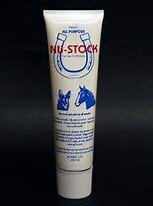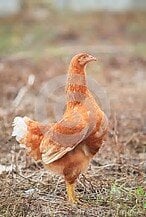FunClucks
Crowing
So I took a fecal sample to the vet (multiple chickens fecal samples, cecal and non-cecal were mixed together). He found capillaria, giardia, and mites of some type. Sent me home with a 2 oz bottle of Panacur (Fenbendazole) 100 mg/mL liquid, said to put it in their water 3 mL/gallon and change the water out every 72 hrs for 5 days, then treat again in 3-4 weeks. Told me to use Seven dust for the mites. I check my chickens every week, and have not seen evidence of mites on their bodies under feathers (neck and vent and feet), but possibly they could have a beginning case of leg mites. The vet treats chickens but really doesn't want to, he's a livestock and cat/dog vet. He told me straight up that the only thing he could really do is a fecal float. He could see them as if they are a pet ($45 visit fee), but there's not much he can do for chickens.
Common dosage for fenbendazole 100 mg/mL that I've seen on this site is 1/2mL or 1/4 mL for standard or smaller size chicken, syringe into mouth, repeat in 10 days.
1) Which is best, syringe into chicken, or add to water? My chickens allow me to handle them calmly for the most part, but I've never syringed anything into them, and I'm nervous I'll do it wrong. I read the article, but still. I would treat them during the day while they're awake.
I have 16 hens, one rooster, all 6-7 months old that live full time in a covered run that stays pretty dry with 3-6" of wood chips/pinestraw/grass clippings as run litter. They're not acting sick. Had bubbly poo, so I figured I'd better check for worms. 4 of them have not yet come into lay. 6 of them (Prairie Bluebells) are 4-5 lbs tops full grown, but I swear I have one who's maybe 3 lbs. I have three starlight green eggers ~5 lbs, two Buff Orpingtons 6-7 lbs, three ISA browns 5-6 lbs, one golden comet 4-5 lbs, one olive egger 4-5 lbs. Point is I guess that I have a range of chicken weights.
2) I have Martin's Pen & Poultry Chicken and Roost Insecticide Spray (0.5% Permethrin, says it controls lice and mites, but not what type of mites). Would it work on leg mites? I can spray their feet down. Haven't seen any body mites or roost mites, but I'm not sure I'd be able to see roost mites at the moment since the roost is darkened by poo stains. I was using vaseline as a preventative treatment once a month, but maybe not often enough? Looks like they have dry skin, but some of the scales are just starting to lift I think.
3) Giardia? I've no idea what to do for that. The vet said the Fenbendazole would treat that also.
4) What is the withdrawal period for eggs? We're getting about 9 eggs a day, and eating them all, this would be a significant impact for my family. Can we feed the medicated eggs back to the chickens during the withdrawal time? Hate to toss them.
Advice would be welcome. I'm super stressed over this. I've read the BYC articles on syringing meds into a chicken, how to identify mites, and worm identification and treatment. Also read some stuff on the chicken chick website. So much information, but how to apply it all is throwing me a bit.
Common dosage for fenbendazole 100 mg/mL that I've seen on this site is 1/2mL or 1/4 mL for standard or smaller size chicken, syringe into mouth, repeat in 10 days.
1) Which is best, syringe into chicken, or add to water? My chickens allow me to handle them calmly for the most part, but I've never syringed anything into them, and I'm nervous I'll do it wrong. I read the article, but still. I would treat them during the day while they're awake.
I have 16 hens, one rooster, all 6-7 months old that live full time in a covered run that stays pretty dry with 3-6" of wood chips/pinestraw/grass clippings as run litter. They're not acting sick. Had bubbly poo, so I figured I'd better check for worms. 4 of them have not yet come into lay. 6 of them (Prairie Bluebells) are 4-5 lbs tops full grown, but I swear I have one who's maybe 3 lbs. I have three starlight green eggers ~5 lbs, two Buff Orpingtons 6-7 lbs, three ISA browns 5-6 lbs, one golden comet 4-5 lbs, one olive egger 4-5 lbs. Point is I guess that I have a range of chicken weights.
2) I have Martin's Pen & Poultry Chicken and Roost Insecticide Spray (0.5% Permethrin, says it controls lice and mites, but not what type of mites). Would it work on leg mites? I can spray their feet down. Haven't seen any body mites or roost mites, but I'm not sure I'd be able to see roost mites at the moment since the roost is darkened by poo stains. I was using vaseline as a preventative treatment once a month, but maybe not often enough? Looks like they have dry skin, but some of the scales are just starting to lift I think.
3) Giardia? I've no idea what to do for that. The vet said the Fenbendazole would treat that also.
4) What is the withdrawal period for eggs? We're getting about 9 eggs a day, and eating them all, this would be a significant impact for my family. Can we feed the medicated eggs back to the chickens during the withdrawal time? Hate to toss them.
Advice would be welcome. I'm super stressed over this. I've read the BYC articles on syringing meds into a chicken, how to identify mites, and worm identification and treatment. Also read some stuff on the chicken chick website. So much information, but how to apply it all is throwing me a bit.






